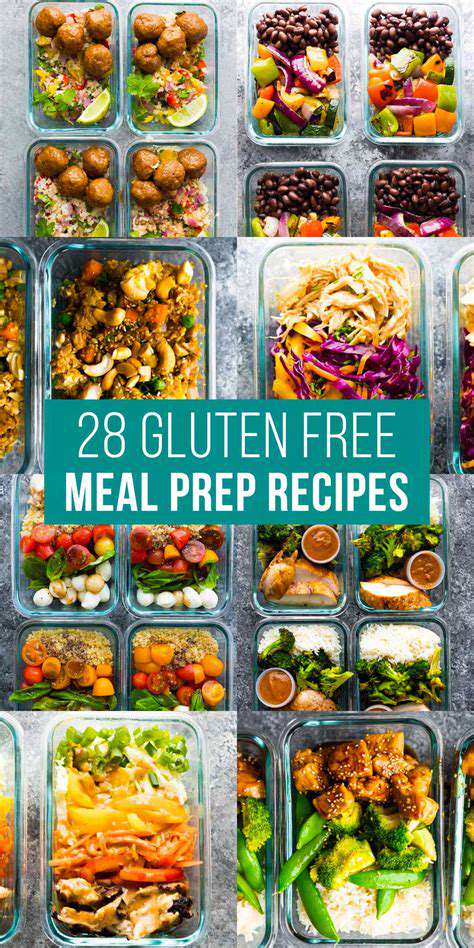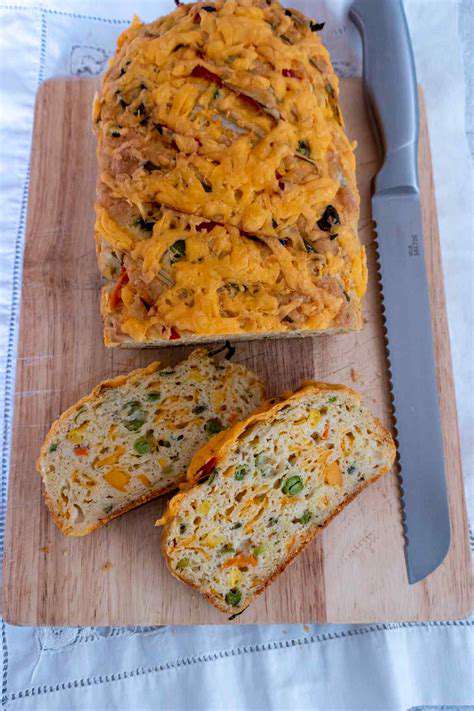Best Recipes for People with Celiac Disease

Gluten-Free Flour Blends: A World of Possibilities
Mastering gluten-free baking means diving into the fascinating world of alternative flour combinations. Unlike traditional wheat flour, gluten-free options like almond flour, coconut flour, and sorghum flour each bring their own personality to the mix. The secret to bakery-quality results lies in understanding how these flours interact with liquids and fats. For instance, buckwheat flour adds heartiness while arrowroot powder creates lightness - it's all about finding your perfect blend.
Seasoned bakers know that creating custom flour mixes can elevate simple recipes to extraordinary levels. A 70:30 ratio of brown rice flour to tapioca starch often yields excellent structure, while adding a tablespoon of psyllium husk can mimic gluten's binding properties. Don't be afraid to play with proportions until you discover your signature mix.
Understanding Gluten-Free Ingredients
The gluten-free pantry requires some special staples that work differently than conventional ingredients. Where wheat flour naturally contains gluten proteins that create elasticity, gluten-free baking demands thoughtful substitutions. Xanthan gum isn't just an additive - it's the architectural support that holds your baked goods together. Similarly, flax eggs (1 tbsp ground flax + 3 tbsp water) can provide the binding that regular eggs offer in traditional recipes.
Moisture management becomes crucial when working with gluten-free ingredients. Coconut flour drinks up liquid like a sponge, while almond flour adds natural oils. Keeping a food scale handy helps maintain precision, as volume measurements can vary dramatically between different gluten-free flours.
Essential Gluten-Free Baking Techniques
Successful gluten-free baking relies on adapted methods rather than following conventional baking wisdom. The resting period technique - letting batter sit for 30 minutes before baking - allows flours to fully hydrate and prevents gritty textures. Unlike wheat-based doughs that benefit from vigorous kneading, gluten-free mixtures prefer gentle folding to maintain delicate structures.
Oven temperatures often need adjustment too. Many gluten-free goods bake better at slightly lower temperatures (about 25°F less than traditional recipes suggest) for longer periods. This prevents the exterior from hardening before the interior sets properly. An oven thermometer ensures your temperature readings are accurate.
Common Gluten-Free Baking Challenges
Every gluten-free baker encounters the frustration of crumbly cookies or dense bread at some point. The solution often lies in balancing wet and dry ingredients more precisely than with wheat flour recipes. When a batter seems too thin, resist the urge to add more flour immediately - letting it rest for 10 minutes frequently solves the issue as the flours absorb liquid.
Another frequent issue involves achieving proper browning. Since gluten-free flours lack certain proteins that promote Maillard reactions, adding a teaspoon of honey or maple syrup to batters can enhance color development. Some bakers swear by brushing tops with milk or egg wash for better browning.
Adapting Traditional Recipes
Converting grandma's famous chocolate chip cookie recipe to gluten-free requires more than just swapping flours. Successful adaptation means rethinking the entire recipe architecture - sometimes increasing eggs, adjusting leaveners, or incorporating additional fats. A good starting point is replacing each cup of wheat flour with 140g of a trusted gluten-free blend plus 1/2 teaspoon xanthan gum.
Pay special attention to mixing times. Where traditional recipes might instruct to mix until smooth, gluten-free batters often do better with minimal mixing once ingredients are incorporated. Overmixing can lead to tough textures as it doesn't have gluten's elastic network to provide structure.
Gluten-Free Baking Recipes: Inspiration and Ideas
The world of gluten-free baking offers endless creative possibilities beyond simple substitutions. Nut-based crusts, vegetable purees, and alternative sweeteners can transform ordinary recipes into extraordinary creations. Consider a rich flourless chocolate torte that showcases chocolate's depth rather than masking it with flour, or delicate macarons that naturally contain no gluten.
Seasonal ingredients inspire particularly wonderful gluten-free treats. Summer's ripe peaches shine in an almond flour clafoutis, while winter calls for spicy gingerbread made with sorghum and molasses. Let the ingredients guide your creativity rather than limitations dictate your options.
Creative Gluten-Free Pasta Dishes: Elevating Your Italian Meals

Innovative Gluten-Free Pasta Shapes
Modern gluten-free pasta options have shattered previous limitations, offering textures that truly satisfy. Beyond standard spaghetti, explore artisan-crafted shapes like casarecce or trofie made from innovative flour blends. The key to perfect gluten-free pasta lies in precise cooking times - usually 1-2 minutes less than package instructions suggest. Test frequently and pull the pasta when it's still slightly firm (al dente) as it will continue cooking in the sauce.
Different shapes hold sauces differently - ridged penne catches chunky vegetables beautifully, while silky tagliatelle wraps around creamy sauces. Try pairing corn-based pastas with vibrant pestos or lentil flour noodles with hearty meat ragus to discover exciting new combinations.
Delicious Gluten-Free Pasta Sauces
Sauce selection can make or break a gluten-free pasta dish. Emulsified sauces like carbonara or cacio e pepe showcase gluten-free pasta's texture without overwhelming it. For thicker sauces, consider adding a splash of starchy pasta water to help the coating adhere better. Tomato-based sauces benefit from a pinch of sugar to balance acidity, while cream sauces might need extra seasoning to compensate for alternative pastas' stronger flavors.
Don't overlook oil-based sauces either. A simple garlic-infused olive oil with chili flakes and parsley can elevate gluten-free spaghetti magnificently. For protein-packed options, try blending roasted red peppers with walnuts for a rich, dairy-free cream sauce that clings perfectly to rigatoni.
Gluten-Free Pasta Dishes for Every Occasion
Gluten-free pasta deserves center stage at any gathering. For dinner parties, consider individual baked pasta dishes in ramekins - the presentation impresses while ensuring proper portion control. Weeknight meals shine with one-pot pasta dishes where the pasta cooks directly in a flavorful broth, absorbing maximum taste. Even cold pasta salads take on new life with gluten-free orzo or fusilli paired with seasonal vegetables.
Special occasions might call for handmade gluten-free pasta - a surprisingly achievable project with the right flour blend. Incorporate vibrant ingredients like beet powder or spinach puree into the dough for visually stunning results. Serve these colorful creations with simple sauces that let the pasta's artistry shine.
Beyond the Basics: Gluten-Free Meals for Special Occasions

Understanding Gluten-Free Diets
Adopting a gluten-free lifestyle involves more than eliminating obvious wheat products. Unexpected items like soy sauce, processed meats, and even some medications can contain hidden gluten sources. Reading labels becomes second nature, looking beyond gluten-free claims to verify certification seals from reputable organizations. Cross-contamination risks extend beyond the kitchen - shared toasters, wooden utensils, and even play-dough can pose problems for highly sensitive individuals.
The learning curve can feel steep, but numerous resources exist to help. Smartphone apps that scan barcodes, gluten-free restaurant cards in multiple languages, and supportive online communities all make the transition smoother. Remember that sensitivity levels vary - some people react to traces measured in parts per million, while others tolerate small amounts.
Navigating Common Gluten Sources
Gluten hides in surprising places that even experienced gluten-free eaters sometimes miss. Malt flavoring (derived from barley) appears in many cereals and chocolate products, while modified food starch in processed foods often comes from wheat. Even natural flavors can sometimes contain gluten unless specifically noted otherwise. Dining out presents particular challenges - thickeners in soups, dredging flour on fried foods, and shared cooking oils all risk contamination.
Developing a mental checklist helps: Are oats certified gluten-free? Is that broth made with wheat? Does the soy sauce contain wheat? Over time, these questions become automatic. Carrying safe snacks prevents desperation choices when options seem limited. Most importantly, don't hesitate to ask detailed questions at restaurants - your health deserves the attention.
Gluten-Free Alternatives and Substitutions
The gluten-free market has exploded with innovative products that go far beyond early attempts at bread and pasta. Cauliflower pizza crusts have evolved from soggy disappointments to crispy, flavorful bases that even gluten-eaters enjoy. Chickpea pasta offers complete plant-based protein while mimicking traditional textures. Even artisanal gluten-free sourdough breads now achieve proper crust and crumb structure through advanced fermentation techniques.
When substituting in recipes, consider the role gluten played in the original. For thickening sauces, arrowroot or cornstarch often work better than gluten-free flour blends. In baking, adding an extra egg or chia gel can compensate for binding issues. Asian cuisine adapts beautifully with rice noodles and tamari instead of soy sauce - sometimes the gluten-free version becomes your new favorite.
Quick and Easy Gluten-Free Snacks and Sides: Fueling Your Day
Quick Gluten-Free Breakfast Options
Morning meals set the nutritional tone for the entire day, and gluten-free options abound beyond basic cereal. Chia pudding prepared the night before offers a nutrient-dense grab-and-go option - layer it with seasonal fruit and nuts for visual appeal and varied texture. Savory breakfasts like sweet potato toast (thick slices roasted until tender) topped with avocado and eggs provide sustained energy without gluten. Even traditional breakfast foods transform beautifully - gluten-free waffle irons create crisp exteriors with fluffy interiors when using the right flour blend.
For those rushed mornings, keep pre-portioned smoothie packs in the freezer - just add liquid and blend. Include a scoop of gluten-free oats or nut butter for staying power. Breakfast burritos with gluten-free tortillas can be made in batches and reheated, packed with scrambled eggs, black beans, and cheese for a complete meal.
Savory Gluten-Free Sides
Side dishes present opportunities to incorporate more vegetables and whole grains into meals. Roasted cauliflower steaks seasoned with smoked paprika make a substantial side that holds its own next to any main protein. For something creamier, pureed parsnips or celery root offer intriguing alternatives to mashed potatoes. Stuffed mushrooms with gluten-free breadcrumbs (made from leftover gluten-free bread) add elegant flair to dinner parties.
Grain salads shine in gluten-free cooking - try farro (ensure it's certified gluten-free), quinoa, or millet as bases. Toss with roasted vegetables, fresh herbs, and a bright vinaigrette for sides that often upstage the main course. These dishes frequently taste better after sitting, making them perfect for make-ahead meals.
Gluten-Free Snacking Solutions
Smart snacking prevents energy crashes and poor food choices later. Homemade trail mixes allow complete control over ingredients - combine raw nuts, seeds, unsweetened dried fruit, and dark chocolate chips for balanced nutrition. Energy balls made from dates, nut butter, and gluten-free oats satisfy sweet cravings while providing protein and fiber. Keep pre-cut vegetables with single-serving hummus cups readily available for instant healthy snacks.
For something more substantial, mini frittatas baked in muffin tins offer portable protein. Gluten-free crackers have improved dramatically - pair them with cheese, smoked salmon, or nut butters for satisfying mini-meals. Remember that snacks should complement your daily nutrition goals rather than derail them.
Read more about Best Recipes for People with Celiac Disease
Hot Recommendations
- Traditional Foods for Day of the Dead
- Food Etiquette in Italy: Pasta Rules!
- Best Family Friendly Restaurants with Play Areas in [City]
- Review: The Best [Specific Dessert] Place in [City]
- Top Ice Cream Parlors in [City]
- Traditional Foods for Halloween
- The History of the Potato in Ireland
- Best Vegan Pizza Joints in [City] [2025]
- Best Bakeries for Sourdough Bread in [City]
- Food Culture in Argentina: Asado and Wine

![Healthy Meal Plan for Weight Loss [7 Day Guide]](/static/images/28/2025-05/Day53AAFocusonFiberandHydration.jpg)
![Top Food Trucks in [City] You Need to Find](/static/images/28/2025-05/GourmetPizzaPerfection3A5BTruckName5D.jpg)

![Top Places for Hot Dogs in [City]](/static/images/28/2025-05/HiddenGemsandLocalFavorites3ADiscoveringtheUnexpected.jpg)
![Review: [Specific Cuisine] Restaurant Experience in [City]](/static/images/28/2025-05/FinalThoughts3AAHighlyRecommendedDiningDestination.jpg)



![Top Spots for Oysters in [Coastal City]](/static/images/28/2025-05/CasualOysterBarsforaRelaxedAtmosphere.jpg)
![Review: The [Specific Brand] Smart Mug](/static/images/28/2025-05/PracticalityandEverydayUse3AAReal-WorldAssessment.jpg)
